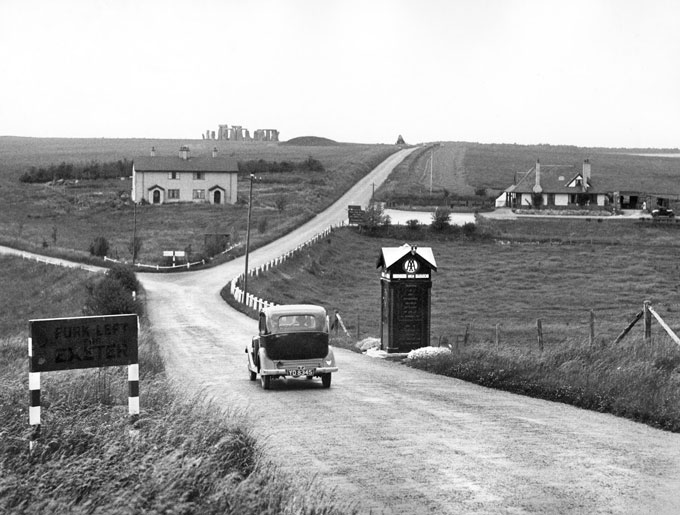The landscape of Stonehenge?
 |
| Stonehenge c. 1885. Wikipedia. |
 |
| 10th battalion CEF marching past Stonehenge1914–15 Wikipedia |
 |
| A303 road in 1930 from Stonehenge: a history in photographs |
Even if we could provide a truly accurate picture of what the landscape was like at this time, it has had thousands of years of history since then. It has become one part of a larger landscape that includes agriculture and, yes roads! Landscapes are by their very nature palimpsests, we can see the evidence of history, multiple periods superimposed, occurring within the same space, and this is part of what makes them fascinating. Landscape is dynamic, and it has many aspects - it comprises all visible features of an area from the geological and geographical, the mountains, rivers, vegetation, to the anthropogenic, the land use, buildings, electricity pylons, to the transitory and ephemeral, weather, light.
Landscape is not just wilderness, it is cultural and constructed, a
combination of the natural and physical, overlain by human history,
reflecting and defining regional and national identity. Another perspective could be that we are removing Stonehenge from its
landscape, detaching it from the rest of its history and placing it
within something artificial, designed to mimic our best guess at what it
looked like during the Neolithic.
It's curious to see how different people perceive the landscape, and
what the 'ideal' should be. Helen Ghosh, Director General of the
National Trust, is quoted as saying the A303 "the
blight of the road that dominates the landscape of Stonehenge" and that
the tunnel will create "space for nature and improve the site's
tranquillity". The idea just feels very artificial to me, and it is
not really going to be tranquil when you are sharing the space with
hundreds of other tourists. It is amazing, imposing, inspiring, but the
experience is managed, and educational. It is not tranquillity and ruin.
In some ways Stonehenge is similar to
the Egyptian Pyramids at Giza - both are frequently portrayed in a very
selective manner that places them in a 'natural' wilderness that
appears to be free of human activity. Visitors are surprised, and
perhaps disappointed, when they are shown the wider context, and find
that both are actually part of a wider landscape that is distinctly urban. Even the landscape that we see today, complete with roads, is different to what it was when the land surrounding Stonehenge was given to the National Trust in 1927. Cottages and a World War 1 aerodrome were removed, and nearby there are two memorials to fatal flying accidents. To me, the photos above are a palimpsest of cultural heritage, I love that you can see so many different parts of history together. The road is arguably as much a piece of landscape history as the monument!
 |
| Pyramids of Giza and Stonehenge: presentation versus reality (images all from Wikipedia) |
We
are concerned with all types and aspects of landscape, from wilderness
and cultural landscapes to the built environment. - See more at:
http://www.landscaperesearch.org/#sthash.jTwdLbzl.dpu

Comments
Post a Comment